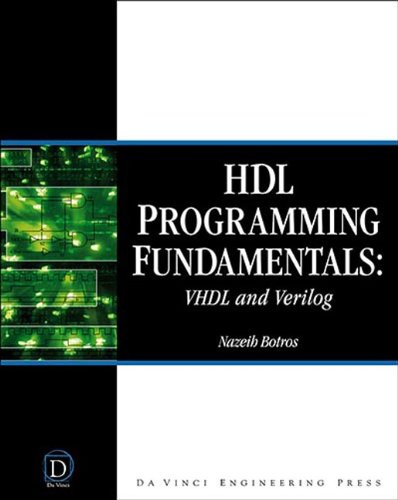HDL Programming Fundamentals: VHDL and Verilog (Davinci Engineering)
CHEAP,Discount,Buy,Sale,Bestsellers,Good,For,REVIEW, HDL Programming Fundamentals: VHDL and Verilog (Davinci Engineering),Wholesale,Promotions,Shopping,Shipping,HDL Programming Fundamentals: VHDL and Verilog (Davinci Engineering),BestSelling,Off,Savings,Gifts,Cool,Hot,Top,Sellers,Overview,Specifications,Feature,on sale,HDL Programming Fundamentals: VHDL and Verilog (Davinci Engineering) HDL Programming Fundamentals: VHDL and Verilog (Davinci Engineering)

HDL Programming Fundamentals: VHDL and Verilog (Davinci Engineering) Overview
Advances in semiconductor technology continue to increase the power and complexity of digital systems. To design such systems requires a strong knowledge of Application Specific Integrated Circuits (ASICs) and Field Programmable Gate Arrays (FPGAs), as well as the CAD tools required. Hardware Description Language (HDL) is an essential CAD tool that offers designers an efficient way for implementing and synthesizing the design on a chip. HDL Programming Fundamentals: VHDL and Verilog teaches students the essentials of HDL and the functionality of the digital components of a system. Unlike other texts, this book covers both IEEE standardized HDL languages: VHDL and Verilog. Both of these languages are widely used in industry and academia and have similar logic, but are different in style and syntax. By learning both languages students will be able to adapt to either one, or implement mixed language environments, which are gaining momentum as they combine the best features of the two languages in the same project. The text starts with the basic concepts of HDL, and covers the key topics such as data flow modeling, behavioral modeling, gate-level modeling, and advanced programming. Several comprehensive projects are included to show HDL in practical application, including examples of digital logic design, computer architecture, modern bioengineering, and simulation.

